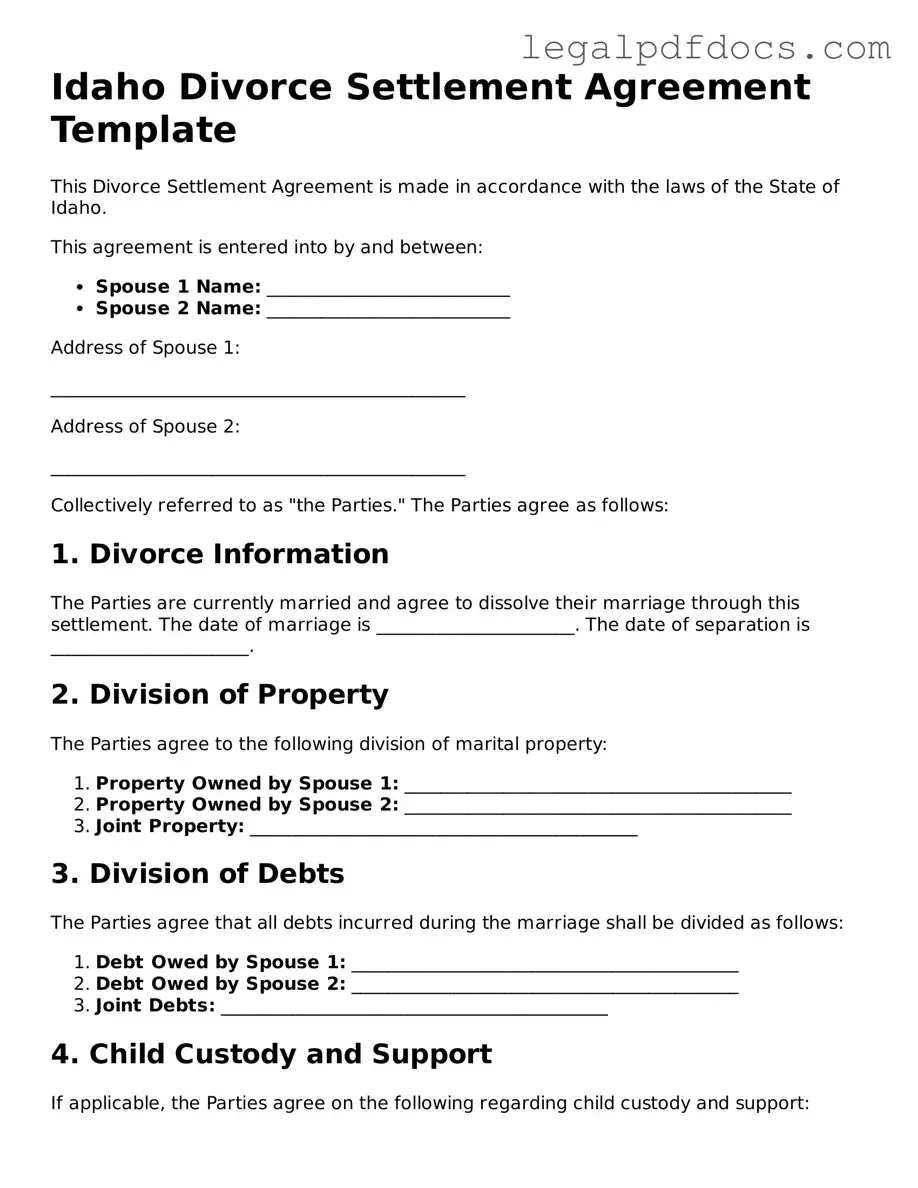Official Divorce Settlement Agreement Form for Idaho
The Idaho Divorce Settlement Agreement form is a legal document that outlines the terms of a divorce between two parties. This agreement covers various aspects such as property division, child custody, and support arrangements, ensuring that both parties have a clear understanding of their rights and responsibilities. Completing this form is a crucial step in finalizing a divorce in Idaho, so take action by filling it out today.
Click the button below to get started!
Open Divorce Settlement Agreement Editor Here
